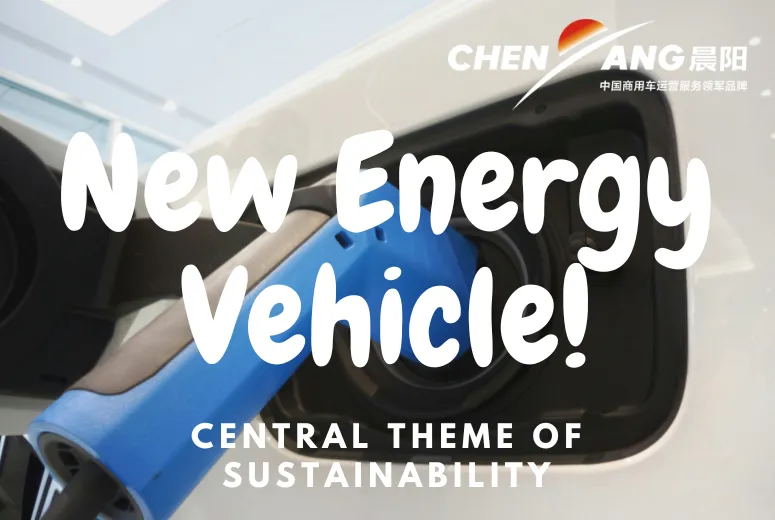Sustainability as a Central Theme in New Energy Vehicles
The rapid global transition to sustainable living has placed new energy vehicles (NEVs) at the forefront of environmentally conscious innovation. By offering an alternative to traditional internal combustion engine vehicles, new energy vehicles align with global efforts to reduce carbon emissions and combat climate change. This shift in the automotive industry underscores the growing importance of sustainability as a driving force in technology and marketing strategies.

Reducing Carbon Footprints through Clean Energy With New Energy Vehicles
New energy vehicles significantly contribute to reducing the carbon footprint of transportation, one of the largest sources of greenhouse gas emissions. Unlike conventional cars, new energy automobiles rely on cleaner energy sources, such as electricity or hydrogen, rather than fossil fuels. This eliminates tailpipe emissions, leading to cleaner air in urban areas and reduced dependency on non-renewable resources. Additionally, advances in renewable energy integration, such as solar and wind-powered charging networks, further enhance the sustainability credentials of NEVs, closing the loop on eco-friendly energy consumption.
Sustainability Beyond the Vehicle: Green Manufacturing About New Energy Vehicles
The commitment to sustainability in new energy vehicles extends beyond the vehicle itself. Automakers are rethinking their manufacturing processes to minimize environmental impact. This includes adopting energy-efficient production methods, sourcing recycled or sustainable materials, and utilizing renewable energy in factories. Lightweight materials such as aluminum and carbon fiber improve vehicle efficiency while reducing the energy required for production. Moreover, many brands are embracing circular economy principles by designing vehicles with components that are easier to recycle and reuse, ensuring minimal waste at the end of the product’s lifecycle.
Battery Technology and Lifecycle Management About New Energy Vehicles
While electric batteries are central to NEVs' sustainability, their production and disposal present challenges. Mining for raw materials like lithium, cobalt, and nickel raises environmental and ethical concerns. Automakers are addressing these issues by investing in ethical sourcing practices, reducing reliance on scarce resources, and developing solid-state batteries with longer lifespans and fewer environmental impacts.
Battery lifecycle management has also become a key focus. Companies are establishing robust recycling programs to recover valuable materials from used batteries, preventing landfill waste and reducing the demand for new mining activities. Second-life applications, such as repurposing batteries for stationary energy storage, further maximize their utility and sustainability.
The Role of Infrastructure in Driving Sustainability Of New Energy Vehicles
The infrastructure supporting NEVs is equally critical to their sustainability story. Public and private sectors are collaborating to expand the network of EV charging stations, prioritizing fast chargers powered by renewable energy. These efforts not only make NEVs more convenient for users but also ensure that their environmental benefits are maximized by reducing the carbon footprint of charging.
Hydrogen refueling infrastructure, though less developed, is gaining traction as automakers explore fuel cell technology for applications like long-haul trucking. A sustainable and scalable refueling network is essential for unlocking the full potential of NEVs and ensuring their adoption across diverse transportation needs.
Marketing Sustainability to Eco-Conscious Consumers About New Energy Vehicles
Sustainability has become a central theme in NEV advertising, resonating deeply with consumers seeking environmentally responsible choices. Automakers are leveraging powerful storytelling to connect with their audiences, focusing on themes such as protecting the planet for future generations and contributing to a greener world. Ads often highlight tangible benefits, such as reduced emissions and cost savings from lower fuel and maintenance expenses, to appeal to both eco-conscious and pragmatic buyers.
Brands are also aligning with global sustainability movements, such as carbon-neutral pledges and partnerships with conservation organizations. By integrating these efforts into their marketing strategies, automakers not only enhance their brand image but also inspire consumer trust and loyalty.
Challenges and the Path Ahead of New Energy Vehicles
While the sustainability narrative surrounding NEVs is compelling, challenges remain. The environmental cost of battery production, limited charging infrastructure in some regions, and high upfront costs can deter widespread adoption. Overcoming these barriers requires continued investment in technology, government support through subsidies and incentives, and public awareness campaigns to address misconceptions.
Despite these challenges, the future of NEVs is promising. Innovations in clean energy, advances in battery recycling, and the growing demand for sustainable products are driving the industry toward greater efficiency and accessibility. As these vehicles become more mainstream, their potential to reshape the transportation sector and contribute to global sustainability goals becomes increasingly evident.
-
The Vital Role of Agricultural Machinery in Modern FarmingNewsAug.20,2025
-
The Versatile Role of Backhoe Digger in Modern Construction and AgricultureNewsAug.20,2025
-
The Practical Appeal of Second Hand Vehicles in Modern TransportationNewsAug.20,2025
-
The Evolving Landscape of New Energy Vehicles in Modern TransportationNewsAug.20,2025
-
The Evolution of New Vehicles: Electric Innovations and Hybrid VersatilityNewsAug.20,2025
-
The Essential Role of Trailers in Modern Trucking OperationsNewsAug.20,2025
Popular products

























